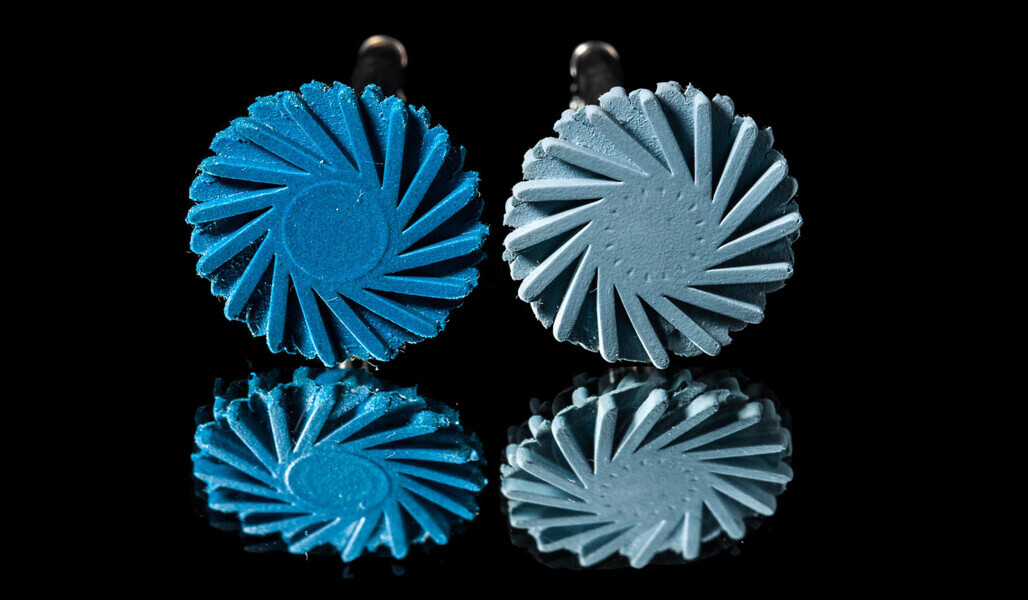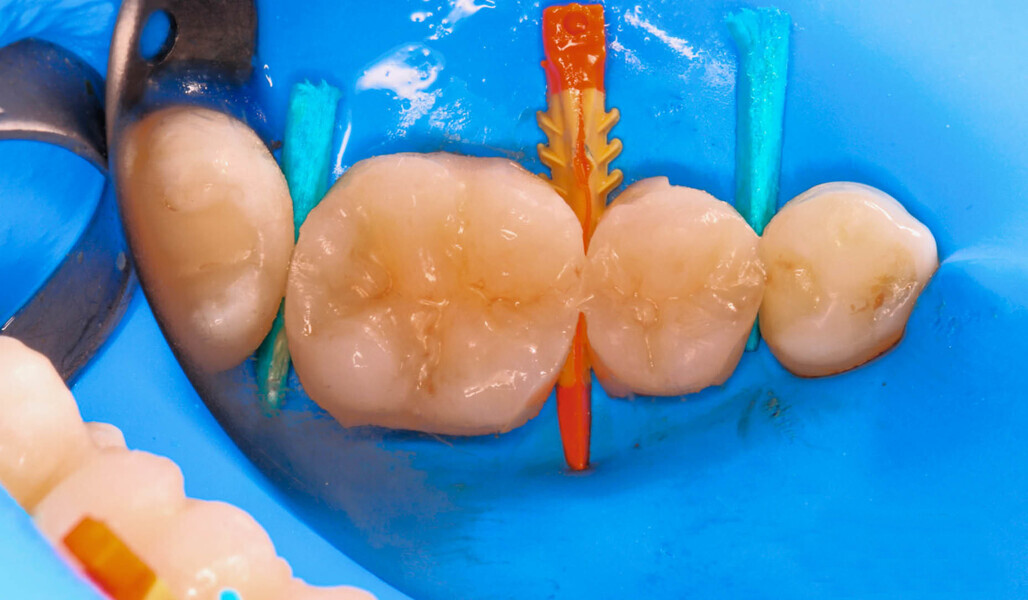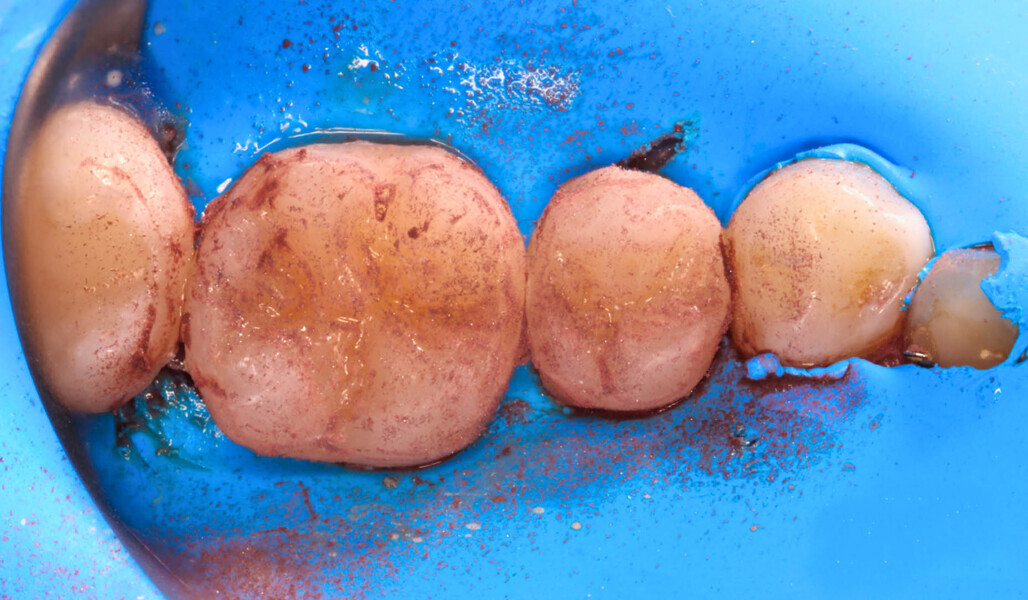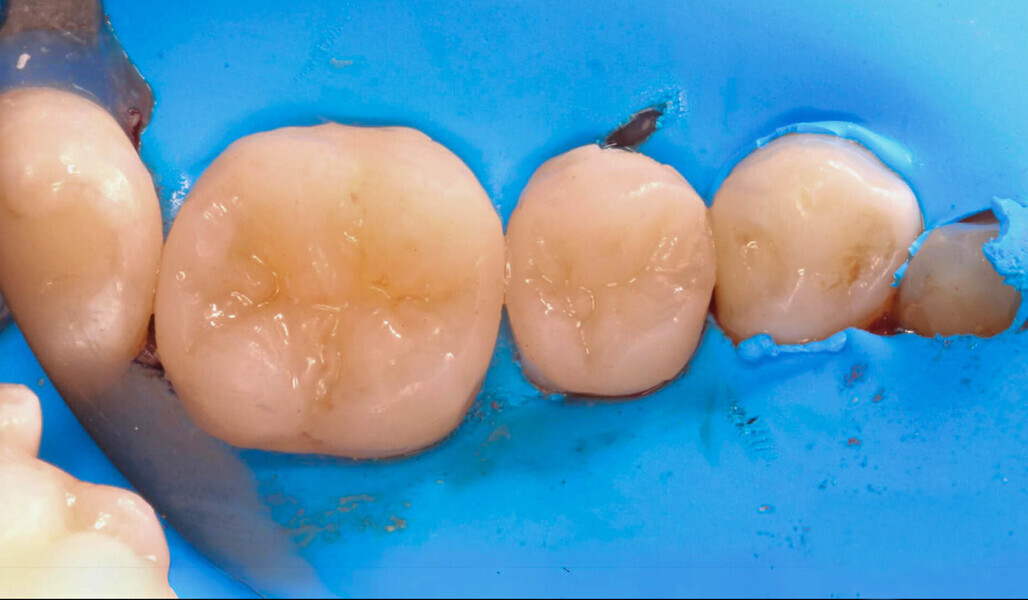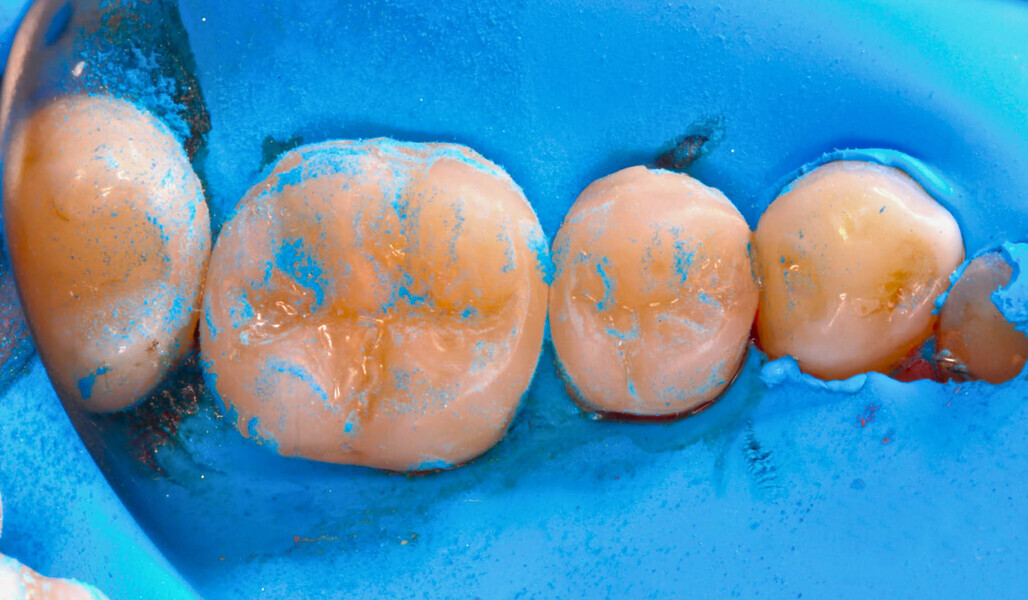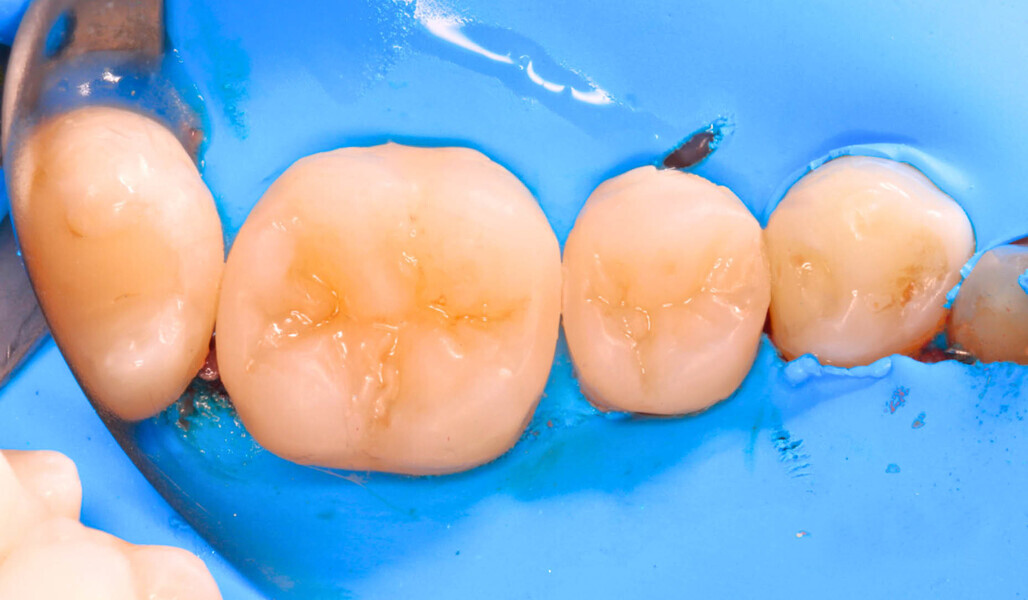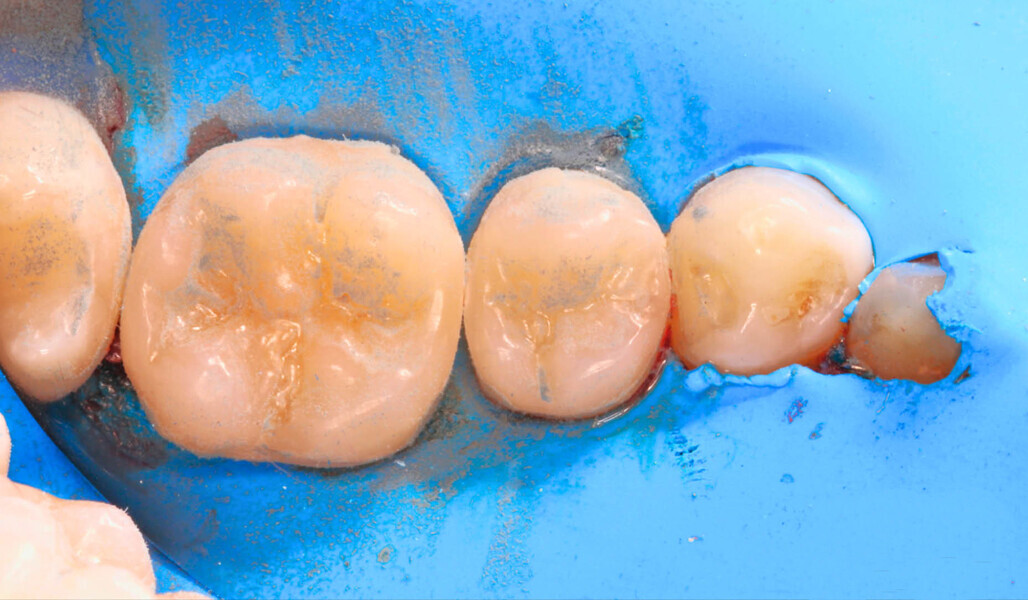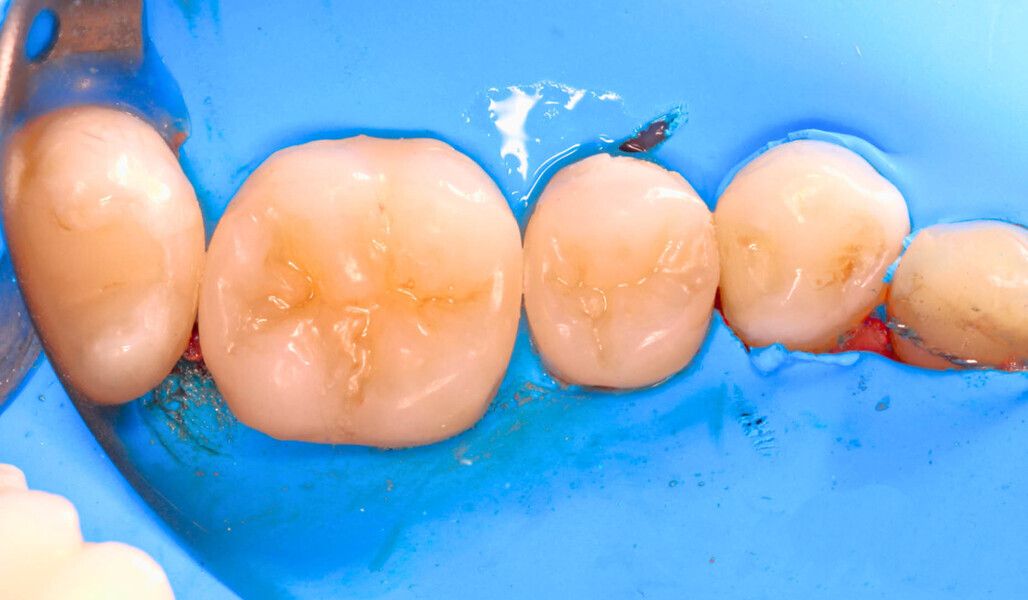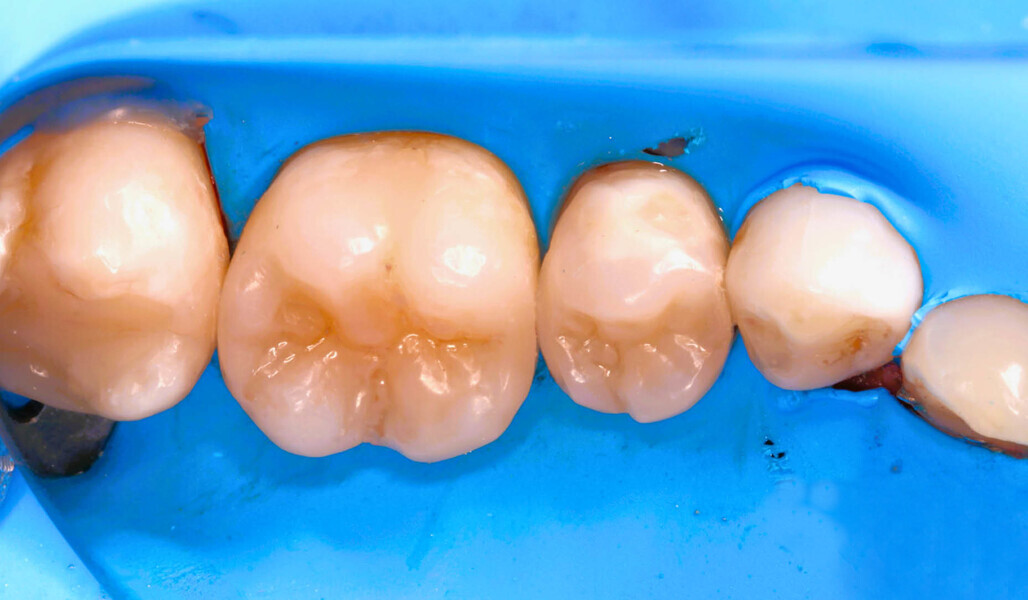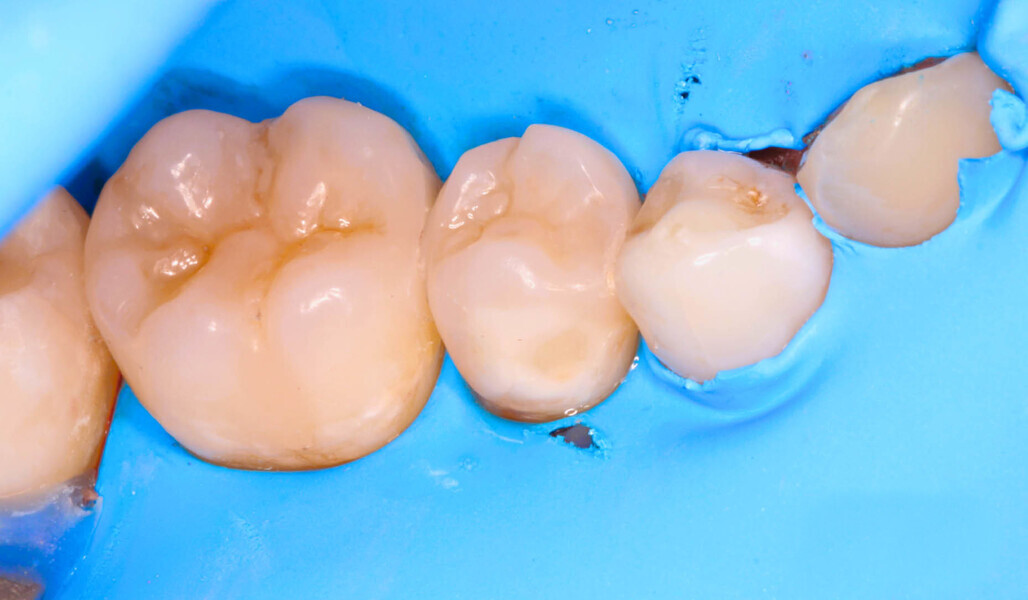Fig. 1: Achieving a high gloss without damaging the freshly modelled occlusal surface requires the use of high-quality polishing rubbers. (All images: Aleksandra Łyżwińska/Kuraray Noritake)
Fig. 2: Immediately after polymerisation, the composite is covered with an oxygen inhibition layer.
Fig. 3: During polishing without water cooling, fragments of the rubber remain on the composite surface.
Fig. 4: Rubber fragments on the composite can be spread over the restoration surface using a fine nylon brush, polishing each fissure and pit.
Fig. 5: Once the excess composite has been removed, polishing should start with the dark-blue TWIST DIA for Composite rubber spiral (Kuraray Noritake Dental).
Fig. 6: The particles are once again spread over the entire restoration surface, and the finer the particle, the better the polishing effect in the grooves.
Fig. 7: The light-blue TWIST DIA for Composite rubber spiral is used to achieve a mirror-like gloss.
Fig. 8: An aesthetic gloss emerges from beneath the particles, and this can be achieved using thin nylon brushes or brushes made from natural goat hair.
Fig. 9: Polishing is not only a matter of aesthetics; it also has an impact on oral health.
Fig. 10: Dr Aleksandra Łyżwińska’s protocol for achieving a mirror-like gloss polish involves the use of high-quality diamond rubber spirals with gradation, used with sensitivity over an extended period.



 Austria / Österreich
Austria / Österreich
 Bosnia and Herzegovina / Босна и Херцеговина
Bosnia and Herzegovina / Босна и Херцеговина
 Bulgaria / България
Bulgaria / България
 Croatia / Hrvatska
Croatia / Hrvatska
 Czech Republic & Slovakia / Česká republika & Slovensko
Czech Republic & Slovakia / Česká republika & Slovensko
 France / France
France / France
 Germany / Deutschland
Germany / Deutschland
 Greece / ΕΛΛΑΔΑ
Greece / ΕΛΛΑΔΑ
 Hungary / Hungary
Hungary / Hungary
 Italy / Italia
Italy / Italia
 Netherlands / Nederland
Netherlands / Nederland
 Nordic / Nordic
Nordic / Nordic
 Poland / Polska
Poland / Polska
 Portugal / Portugal
Portugal / Portugal
 Romania & Moldova / România & Moldova
Romania & Moldova / România & Moldova
 Slovenia / Slovenija
Slovenia / Slovenija
 Serbia & Montenegro / Србија и Црна Гора
Serbia & Montenegro / Србија и Црна Гора
 Spain / España
Spain / España
 Switzerland / Schweiz
Switzerland / Schweiz
 Turkey / Türkiye
Turkey / Türkiye
 UK & Ireland / UK & Ireland
UK & Ireland / UK & Ireland
 Brazil / Brasil
Brazil / Brasil
 Canada / Canada
Canada / Canada
 Latin America / Latinoamérica
Latin America / Latinoamérica
 USA / USA
USA / USA
 China / 中国
China / 中国
 India / भारत गणराज्य
India / भारत गणराज्य
 Pakistan / Pākistān
Pakistan / Pākistān
 Vietnam / Việt Nam
Vietnam / Việt Nam
 ASEAN / ASEAN
ASEAN / ASEAN
 Israel / מְדִינַת יִשְׂרָאֵל
Israel / מְדִינַת יִשְׂרָאֵל
 Algeria, Morocco & Tunisia / الجزائر والمغرب وتونس
Algeria, Morocco & Tunisia / الجزائر والمغرب وتونس
 Middle East / Middle East
Middle East / Middle East
























